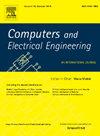Non-linear Synergetic Funnel Control of wind turbine
IF 4
3区 计算机科学
Q1 COMPUTER SCIENCE, HARDWARE & ARCHITECTURE
引用次数: 0
Abstract
This research proposes two new methods that combine Funnel Control (FC) and Synergetic Control (Snc) to improve the performance and stability of wind energy systems. These techniques aim to achieve precise control objectives, such as accurate trajectory tracking with prescribed transient accuracy, by merging the inherent properties of FC and Snc. The novelty lies in the innovative integration of FC with Snc, addressing key challenges like transient load mitigation and precise trajectory tracking, which are not fully resolved by conventional methods. The key innovation is the introduction of a new macro-variable for Snc, inspired by FC principles and PI controllers, providing enhanced adaptability and robustness. The proposed methods are applied to a wind turbine using MATLAB/Simulink simulations. Key performance indicators, including relative error, rise time, settling time, and control effort, are evaluated and compared. The proposed controllers, FC-Snc and FC Nonlinear-Snc, outperform existing methods, reducing tracking errors and achieving faster convergence. Simulation results demonstrate their superior tracking accuracy, noise resistance, and disturbance rejection. Additionally, the analysis of power coefficient behavior and control input dynamics highlights the operational efficiency and transient load mitigation of the proposed controllers. This study showcases the effectiveness of FC-Snc and FC Nonlinear-Snc in enhancing wind energy system performance.
风电机组非线性协同漏斗控制
本研究提出了将漏斗控制(FC)和协同控制(Snc)相结合的两种新方法来提高风能系统的性能和稳定性。这些技术旨在通过融合FC和Snc的固有特性来实现精确的控制目标,例如具有规定瞬态精度的精确轨迹跟踪。其新颖之处在于FC与Snc的创新集成,解决了传统方法无法完全解决的关键挑战,如瞬态负载缓解和精确轨迹跟踪。关键的创新是引入了一个新的Snc宏观变量,受FC原理和PI控制器的启发,提供了增强的适应性和鲁棒性。采用MATLAB/Simulink对某风力发电机组进行了仿真。关键性能指标,包括相对误差,上升时间,稳定时间和控制努力,进行评估和比较。所提出的控制器FC- snc和FC非线性- snc优于现有的方法,减少了跟踪误差,实现了更快的收敛。仿真结果表明,该方法具有良好的跟踪精度、抗噪声性和抗干扰性。此外,对功率系数行为和控制输入动力学的分析突出了所提出的控制器的运行效率和暂态负载缓解。本研究展示了FC- snc和FC非线性- snc在提高风能系统性能方面的有效性。
本文章由计算机程序翻译,如有差异,请以英文原文为准。
求助全文
约1分钟内获得全文
求助全文
来源期刊

Computers & Electrical Engineering
工程技术-工程:电子与电气
CiteScore
9.20
自引率
7.00%
发文量
661
审稿时长
47 days
期刊介绍:
The impact of computers has nowhere been more revolutionary than in electrical engineering. The design, analysis, and operation of electrical and electronic systems are now dominated by computers, a transformation that has been motivated by the natural ease of interface between computers and electrical systems, and the promise of spectacular improvements in speed and efficiency.
Published since 1973, Computers & Electrical Engineering provides rapid publication of topical research into the integration of computer technology and computational techniques with electrical and electronic systems. The journal publishes papers featuring novel implementations of computers and computational techniques in areas like signal and image processing, high-performance computing, parallel processing, and communications. Special attention will be paid to papers describing innovative architectures, algorithms, and software tools.
 求助内容:
求助内容: 应助结果提醒方式:
应助结果提醒方式:


